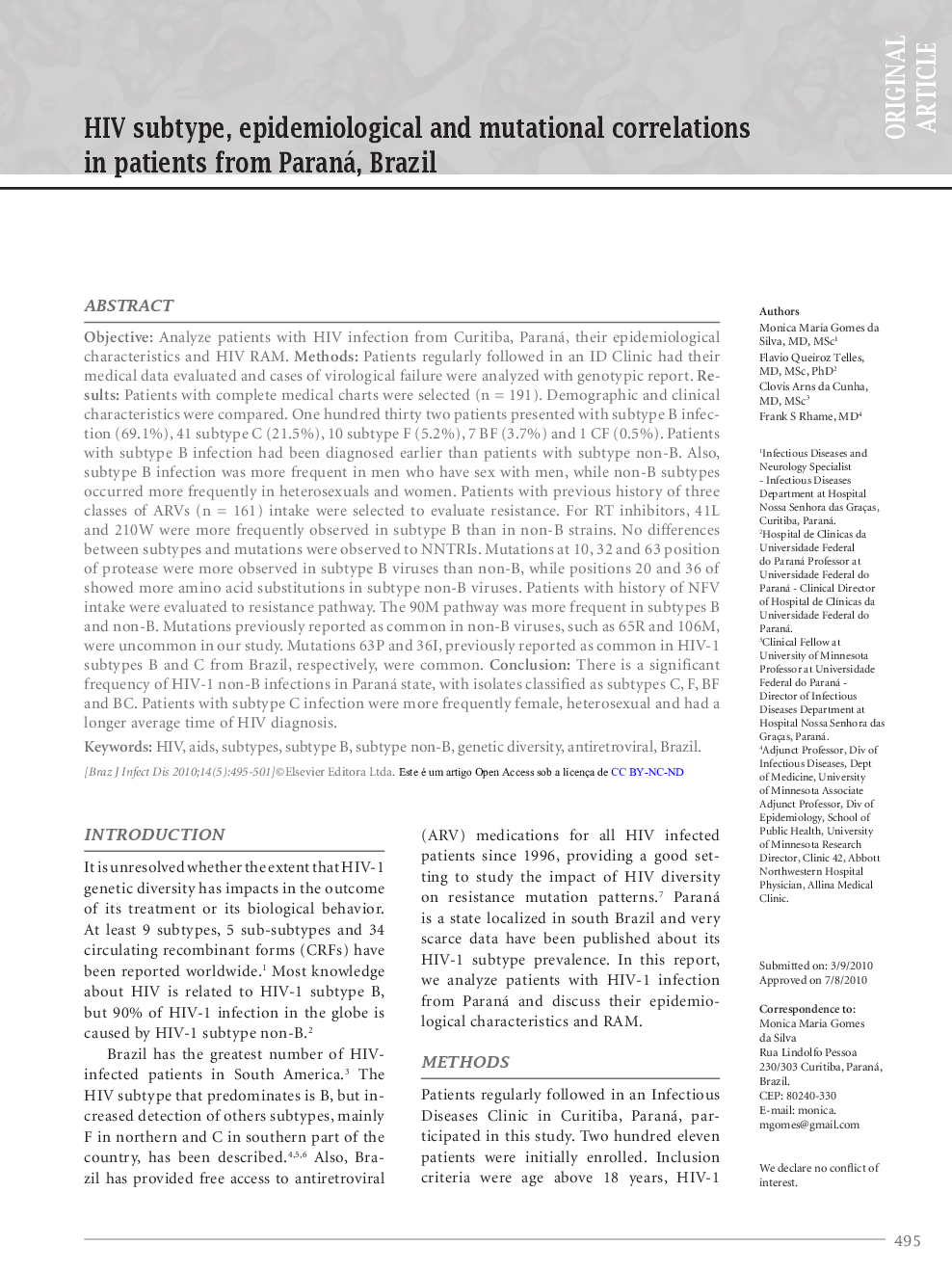| Article ID | Journal | Published Year | Pages | File Type |
|---|---|---|---|---|
| 3344638 | The Brazilian Journal of Infectious Diseases | 2010 | 7 Pages |
ObjectiveAnalyze patients with HIV infection from Curitiba, Paraná, their epidemiological characteristics and HIV RAM.MethodsPatients regularly followed in an ID Clinic had their medical data evaluated and cases of virological failure were analyzed with genotypic report.ResultsPatients with complete medical charts were selected (n = 191). Demographic and clinical characteristics were compared. One hundred thirty two patients presented with subtype B infection (69.1%), 41 subtype C (21.5%), 10 subtype F (5.2%), 7 BF (3.7%) and 1 CF (0.5%). Patients with subtype B infection had been diagnosed earlier than patients with subtype non-B. Also, subtype B infection was more frequent in men who have sex with men, while non-B subtypes occurred more frequently in heterosexuals and women. Patients with previous history of three classes of ARVs (n = 161) intake were selected to evaluate resistance. For RT inhibitors, 41L and 210W were more frequently observed in subtype B than in non-B strains. No differences between subtypes and mutations were observed to NNTRIs. Mutations at 10, 32 and 63 position of protease were more observed in subtype B viruses than non-B, while positions 20 and 36 of showed more amino acid substitutions in subtype non-B viruses. Patients with history of NFV intake were evaluated to resistance pathway. The 90M pathway was more frequent in subtypes B and non-B. Mutations previously reported as common in non-B viruses, such as 65R and 106M, were uncommon in our study. Mutations 63P and 36I, previously reported as common in HIV-1 subtypes B and C from Brazil, respectively, were common.ConclusionThere is a significant frequency of HIV-1 non-B infections in Paraná state, with isolates classified as subtypes C, F, BF and BC. Patients with subtype C infection were more frequently female, heterosexual and had a longer average time of HIV diagnosis.
